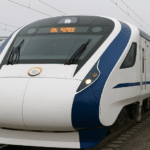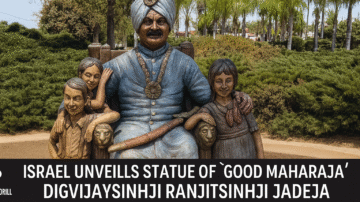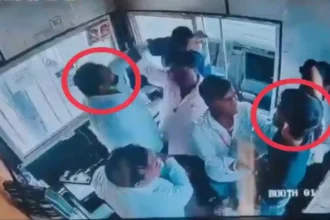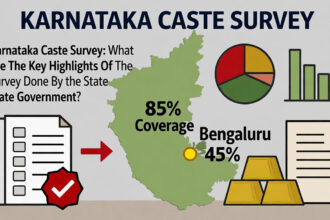Railways Set to Survey 924 km Coastal Railway Line in Gujarat; ₹23 Cr Sanctioned
The Indian Railways has taken a landmark decision: to conduct Final Location Surveys (FLS) and prepare Detailed Project Reports (DPRs) for a massive 924 kilometer coastal railway corridor across Gujarat. In a game-changing move announced in March 2025, the Ministry of Railways has sanctioned ₹52.16 Cr for surveys across 10 priority rail projects in Gujarat and Madhya Pradesh ₹23 Cr of that earmarked specifically for the 924 km Gujarat coastal stretch.
1. Project Overview
The proposal is straightforward yet ambitious: design a new railway line hugging Gujarat’s Arabian Sea coastline, stretching from Dahej in southern Gujarat up to Okha in the northwest. The 924 km route spans from industrial zones to cultural landmarks, creating a seamless corridor linking Gujarat’s economic powerhouse, tourist hubs, and maritime assets.The ₹23 Cr allocation specifically funds:
- Final Location Surveys (FLS)
- Detailed Project Reports (DPRs)
This follows a broader ₹52.16 Cr set aside for 10 rail projects, including goods loops, track doubling, and expansions in Gujarat and Madhya Pradesh.
2. Strategic Route & Segments
The proposed coastal line is divided into three strategic segments:
1. Dahej–Jambusar–Kathana–Khambhat–Dholera–Bhavnagar
2. Bhavnagar–Mahuva–Pipavav
3. Pipavav–Chhara–Somnath–Sardiya–Porbandar–Dwarka–Okha
Each segment is aligned to secure specific economic, trade, or tourism goals:
- Dahej & Pipavav are vital ports with SEZs and export-import cargo flows.
- Dholera is a futuristic smart city under development.
- Somnath, Dwarka, Porbandar, and Okha are key religious tourism destinations Somnath and Dwarka in particular attract millions of pilgrims annually.
This layout balances industrial, commercial, and spiritual significance maximizing freight efficiency while boosting tourist access.
3. Economic & Social Impacts
a) Trade & Industry
- Seamless port linkages between Dahej and Pipavav bolster logistics and export flows.
- Smart connectivity enhances Dholera’s industrial viability.
- Freight capacity uplift due to coastal rail ideal for bulky, time-sensitive cargo.
b) Tourism & Culture
- Easier access to Somnath and Dwarka accelerates religious tourism and local spending.
- Potential for curated coastal leisure routes tackling the growing demand for scenic railway experiences.
- Improved connectivity for coastal towns may catalyze rural and cottage industry growth.
c) Regional Inclusivity
- New rail links across small towns could invigorate regional markets and social integration.
- Commuters benefit, along with reduced dependency on existing, often congested routes.
4. Travel Time & Network Efficiency
This coastal line promises dramatic travel-time cuts between key cities:
- Bhavnagar–Mumbai: Current 779 km reduced to ~370 km.
- Rajkot–Mumbai: 737 → 430 km.
- Jamnagar–Mumbai: 812 → 490 km.
- Bhavnagar–Surat: Distance drops from 530 to 160 km; time shrinks from ~9 h to ~3 h.
Saurashtra–Mumbai: Journey time slashed from ~13 to 6–8 hours.
By bypassing Ahmedabad–Vadodara loops, freight and passenger trains will find coastal routes faster and less congested.
5. Survey & DPR: What Comes Next
With ₹23 Cr approved, the railways will begin:
1. Final Location Survey (FLS) – Precisely aligning route within coastal zones.
2. Detailed Project Report (DPR) – Covering alignment maps, construction costs, social/environmental assessments, and schedules.
3. Land acquisition & clearances – Addressing Coastal Regulation Zone (CRZ), ecology, and logistics.
4. Tendering & bidding – Readying infrastructure contracts.
5. Implementation & execution – Track laying, stations, bridges.
This is a multi-year endeavor, leading to phased construction across segments.
6. Bigger Picture: Railway Boom in Gujarat
This corridor is part of Gujarat’s railway transformation:
Union Budget 2024–25 allocated ₹8,743 Cr for Gujarat rail projects – 15x compared to the 2009–14 average.
42 projects covering ~2,948 km underway, including doubling, freight corridors, and new lines.
224 km of track added per year since 2014 nearly double the previous decade.
The coastal line will integrate with larger ambitions: bullet train (Mumbai–Ahmedabad), freight corridors, and smart-city rail frameworks.
7. Environmental & Economic Considerations
Environmental Impact
Projects along coastal belts face strict CRZ norms. Detailed environmental clearance (EC) studies including ecological, wildlife, and habitat assessments are necessary.
Gujarat’s coastal wetlands include salt pans, creeks, and mangrove fringing areas. Building here calls for careful engineering designs, such as elevated tracks, pilings, and embankments.
Economic Feasibility
Beyond survey costs (₹23 Cr), hundreds of thousands of crores may be invested in construction.
But cost savings via shortened freight/pax loops, plus economic gains from tourism and port trade, could offset the investment.
International funding (e.g. JICA, ADB, World Bank) is a possibility, given the corridor’s strategic coastal and trade alignment.
8. Challenges Ahead
Land Acquisition & Clearances
Coastal properties often include private land, fisheries, and CRZ zones. Acquiring these while ensuring fair compensation and minimal displacement needs comprehensive socio-economic management.
Engineering & Geology
Gulf of Khambhat and Kutch coastlines are known for tidal regimes and soil creep. Coastal construction across such strips is complex, expensive, and demands strong geo-technical planning.
Financial Commitment
Long gestation projects require sustained funding through several budgets a hurdle given competing infrastructure priorities.
Integration with Existing Network
Coastal line must smoothly join ports and inland network ideally with freight loops, sidings, and yard infrastructure requiring careful planning in DPR stage.
9. Stakeholder Perspectives
Government & Railways
As stated in Parliament, the project aligns with goals: missing links, freight congestion relief, last mile connectivity, and regional growth.
Local Communities
Coastal towns are excited: Reddit community discussion highlights optimism:
“nice, now I will be able to directly take train from Veraval to Dwarka”.
Others push for early bridge builds across Gulf of Khambhat, but note geological challenges.
Industry & Ports
Ports in Dahej and Pipavav see rail as having the potential to slash trans‑shipment times and boost logistic capacity.
Tourism Players
Expectations are high: direct inland rail access means new pilgrimage and heritage tourism circuits, regionally tied with hotels, handicrafts, and local economies.
10. Frequently Asked Questions (FAQs)
Q1. What’s the scope of the ₹23 Cr sanction?
It’s dedicated to FLS and DPR preparation for the 924 km coastal corridor part of a broader ₹52 Cr allocation to 10 projects.
Q2. When will construction begin?
Surveys may take 6–12 months; after DPR approval, land and clearance processes could take another year; actual construction begins post that.
Q3. Will this line shorten travel times?
Yes, e.g. Bhavnagar to Surat could shrink from 9 to 3 hours, and Saurashtra to Mumbai from ~13 to 6–8 hours.
Q4. Does it connect holy sites?
Yes, Somnath, Dwarka, Porbandar will be rail linked, greatly boosting pilgrimage and cultural tourism.
Q5. What are key integration points?
Expect interchanges at Dahej, Bhavnagar, Pipavav and Okha for freight/pax, plus connecting loops to the Mumbai–Ahmedabad corridor.
11. Conclusion
The ₹23 Cr sanction for surveying this 924 km coastal railway corridor is a high-impact move for Gujarat’s future rail-signature. By connecting ports, smart cities, religious tourism sites, and smaller coastal hubs, the project can:
- Reduce travel time & routes dramatically, boosting rail efficiency.
- Stimulate trade & exports via port connectivity.
- Launch a new tourism corridor, from beaches to pilgrimage circuits.
- Integrate Gujarat’s rail system with national and freight networks.
That said, navigating CRZ regulations, engineering complexity, land acquisition, environmental safeguards, and securing multi budget funding are key challenges ahead.
If executed well, this corridor could catalyze a new chapter in Gujarat’s coastal transformation, aligning with India’s larger Gati Shakti and maritime development ambition.
Reported by The News Drill, from exclusive coverage of the Railway Ministry’s March 2025 announcement. Stay tuned for updates on the coastal corridor bringing Gujarat closer, one rail link at a time.
Contact us: contact@thenewsdrill.com













